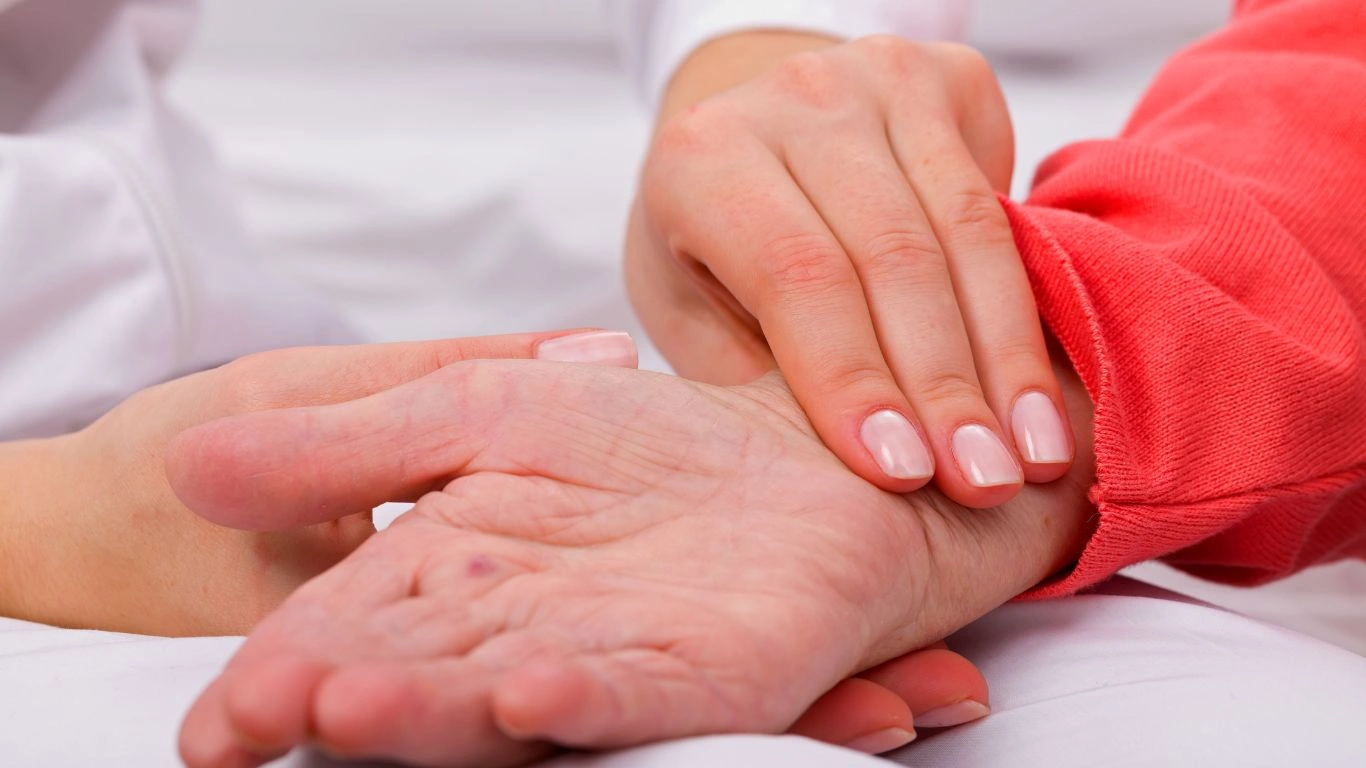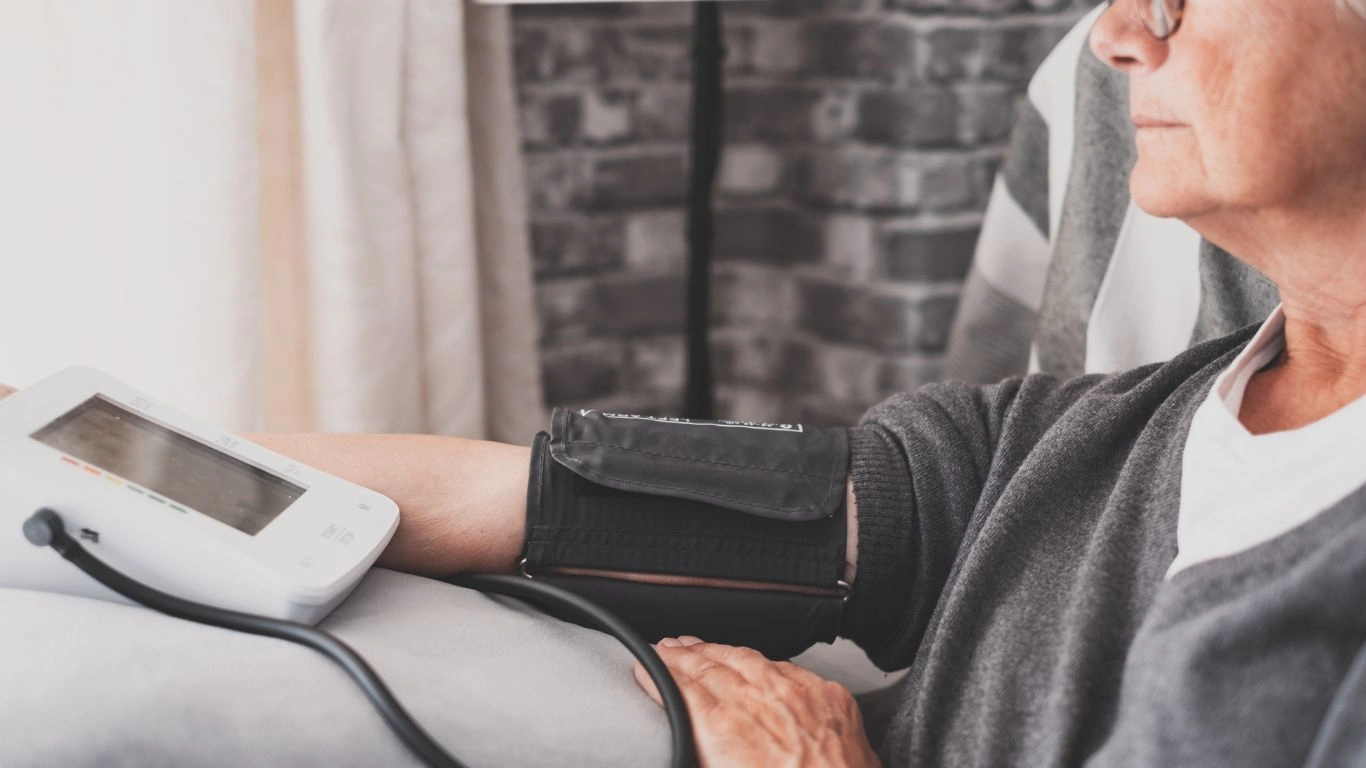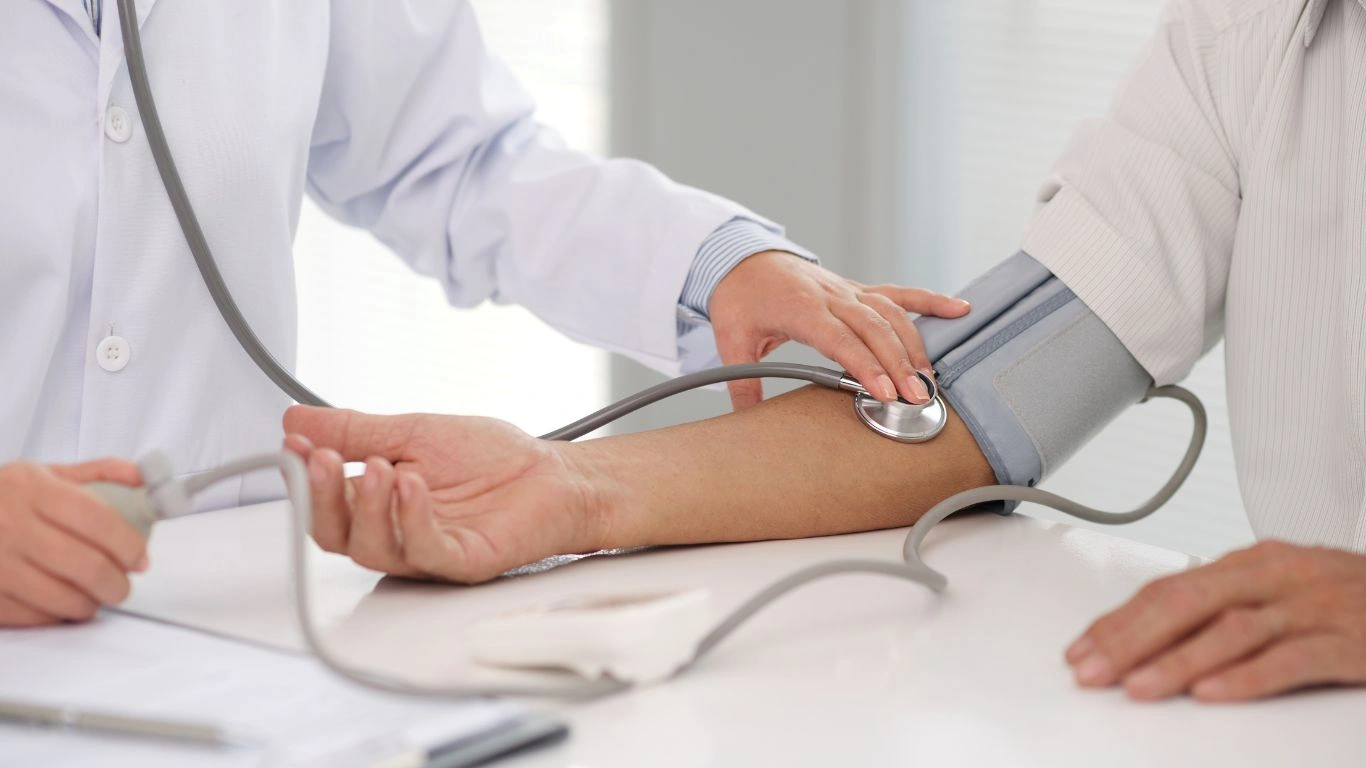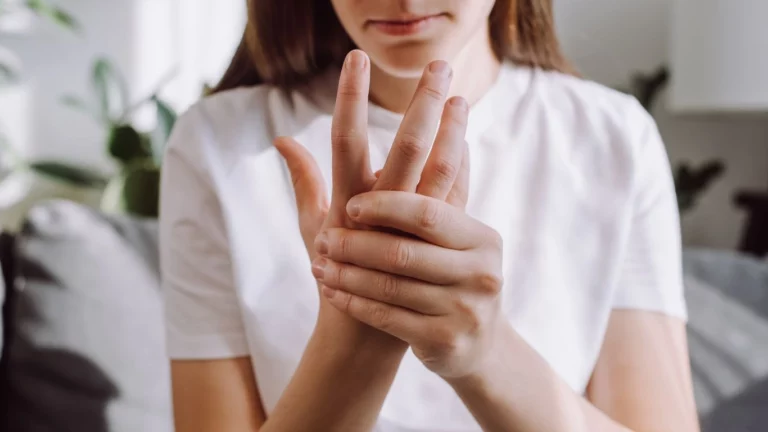“How High Blood Pressure and Chronic Pain Are Connected and How to Manage Both”
High blood pressure, also known as hypertension, is a condition that affects millions of people worldwide. It’s one of those health issues that often flies under the radar because there aren’t always noticeable symptoms, but it can lead to serious complications if not managed properly. Now, when we throw chronic pain conditions into the mix, things get even more complicated. As someone who has spent years studying the connections between high blood pressure and chronic pain, I can tell you that understanding how these two health issues interact is key to managing both effectively. It’s a delicate balance that requires attention to detail, lifestyle changes, and sometimes medication. In this article, I’ll share insights from my personal experience as a hypertension expert, along with actionable advice for anyone struggling with both hypertension and chronic pain. I’ve seen firsthand how these conditions can affect each other, and I’m here to help you navigate that relationship.
The Connection Between High Blood Pressure and Chronic Pain Conditions

High blood pressure and chronic pain are both prevalent health issues, but many don’t realize just how connected they are. The relationship between the two is complex, and for some individuals, living with one of these conditions can worsen the other. It’s a cycle that can feel never-ending, but understanding the link between them is the first step toward breaking it. Whether you have hypertension, chronic pain, or both, you’re likely experiencing the frustration of trying to manage symptoms that don’t seem to let up. The good news? You’re not alone, and there are ways to break this cycle.
How Chronic Pain Contributes to High Blood Pressure

Chronic pain is more than just an uncomfortable sensation—it can be a constant stressor on your body. When you’re in pain, your body enters a fight-or-flight response, releasing stress hormones like cortisol and adrenaline. These hormones temporarily raise your heart rate and blood pressure. Over time, if the pain persists, this stress can lead to consistently high blood pressure levels, especially if you have a preexisting tendency toward hypertension. It’s one of the reasons people with chronic pain conditions like arthritis, fibromyalgia, or back pain are at an increased risk of developing high blood pressure.
Even if you’re not consciously stressed, your body is reacting to the pain 24/7. This unrelenting stress can put a strain on your cardiovascular system, which is why controlling pain becomes so important in managing high blood pressure. But pain relief alone isn’t always enough. You’ll need a comprehensive plan to address both issues at once.
High Blood Pressure Makes Chronic Pain Worse

On the flip side, high blood pressure can exacerbate chronic pain, especially in certain areas of the body. For example, if your blood pressure is uncontrolled, it can lead to poor circulation, which may increase the sensation of pain. High blood pressure also has a tendency to affect the organs that play a role in managing pain signals. As your blood vessels are under pressure, they can become damaged, leading to issues with pain regulation.
For people with conditions like diabetic neuropathy or vascular pain, high blood pressure can worsen the symptoms, creating a vicious cycle where pain contributes to hypertension, and hypertension makes pain worse. If you’ve ever found yourself stuck in this loop, you know how challenging it can be to get out of it. The good news is that managing high blood pressure carefully can help reduce this impact, but it requires attention to both your pain and your blood pressure levels.
Managing Both Conditions: A Comprehensive Approach
Managing both high blood pressure and chronic pain requires a multi-faceted approach. The goal isn’t just to treat one condition and hope the other resolves—it’s about finding a balance between pain management and blood pressure control. Here’s a breakdown of some strategies that can help.
Medication and Lifestyle Adjustments
When it comes to treating both high blood pressure and chronic pain, medication can be an essential tool. For blood pressure, you might be prescribed medications like ACE inhibitors, beta-blockers, or diuretics, depending on your specific needs. For chronic pain, treatment options might include pain relievers, antidepressants, or anticonvulsants. However, what works for one person might not work for another, so working closely with your healthcare provider is crucial to find the right combination.
But medication is just one part of the equation. Lifestyle changes, such as incorporating a low-sodium diet, regular exercise, and stress management techniques like mindfulness or yoga, can make a huge difference in both your blood pressure and your pain levels. Exercise is particularly beneficial—it not only helps to lower blood pressure, but it can also improve your pain tolerance over time. Just be sure to consult your doctor before starting a new exercise routine, especially if your pain limits your movement.
The Role of Stress Management
Stress plays a significant role in both high blood pressure and chronic pain, so learning how to manage stress is one of the most important steps you can take. Chronic stress increases the levels of cortisol in your body, which can raise your blood pressure and intensify your pain perception. Techniques like deep breathing, progressive muscle relaxation, and guided meditation can reduce your body’s stress response and lower both blood pressure and pain levels.
From my experience, many patients underestimate the power of mindfulness and relaxation techniques. It’s easy to think that a pill will solve everything, but stress management is a game-changer when it comes to controlling both conditions. Just a few minutes a day can make a noticeable difference over time, and it’s a tool that can be used alongside other treatments for maximum effect.
Making Diet Changes for Better Blood Pressure and Pain Management

When managing both high blood pressure and chronic pain, diet plays a pivotal role. As someone who has guided many individuals through lifestyle modifications, I can tell you that the food you put on your plate can either support or sabotage your efforts to control both conditions. For example, a diet high in sodium, unhealthy fats, and processed foods can exacerbate both hypertension and pain. On the other hand, a well-balanced, nutrient-rich diet can help lower blood pressure and reduce inflammation, which can ultimately alleviate pain.
The DASH Diet: A Proven Approach
If you’ve heard of the DASH diet (Dietary Approaches to Stop Hypertension), then you’re probably already familiar with its role in managing high blood pressure. The DASH diet emphasizes eating more fruits, vegetables, whole grains, lean proteins, and low-fat dairy, while limiting salt, red meat, and sugary foods. This heart-healthy eating plan is not just beneficial for controlling blood pressure but also for managing pain, especially if your chronic pain is linked to inflammation, such as with arthritis or fibromyalgia.
In my experience, many patients have seen great results from the DASH diet. One of the most common benefits I hear about is how their overall energy levels improve, which can help them stay more active despite their pain. And, as we know, regular movement is key in both controlling blood pressure and reducing pain. The DASH diet has also been linked to a reduction in oxidative stress, which plays a role in both high blood pressure and chronic pain conditions. It’s a win-win!
Anti-Inflammatory Foods: The Double-Edged Sword for Pain and Blood Pressure
In addition to following the DASH diet, incorporating anti-inflammatory foods into your meals can further help you manage both hypertension and chronic pain. Foods like fatty fish (think salmon and mackerel), nuts, seeds, olive oil, and colorful fruits and vegetables are packed with antioxidants and healthy fats that can reduce inflammation in the body. Chronic pain is often fueled by inflammation, so reducing it can provide significant relief.
Another key anti-inflammatory powerhouse is turmeric. I’ve seen many patients use turmeric as part of their daily routine to help ease joint pain or muscle aches. It’s a natural anti-inflammatory that may also help lower blood pressure. Just be cautious if you’re on blood-thinning medications, as turmeric can have a mild blood-thinning effect.
Exercise and Physical Activity: Finding What Works for You

Exercise is one of those things that can seem daunting when you’re dealing with chronic pain. I get it—when you’re already in pain, the thought of moving more can feel overwhelming. However, regular physical activity is one of the best things you can do for both high blood pressure and chronic pain. Of course, I’m not talking about running a marathon or doing high-impact exercises; it’s all about finding what works for you.
The Role of Low-Impact Exercise
Low-impact exercises such as walking, swimming, cycling, and yoga are ideal for people with chronic pain. These activities can help improve cardiovascular health, reduce blood pressure, and enhance flexibility—all while being gentle on the joints and muscles. I’ve seen countless patients make progress just by taking short, daily walks or participating in gentle yoga classes. It’s a great way to start moving without overloading your body.
One key thing to keep in mind is that exercise releases endorphins, which are your body’s natural painkillers. So, while it may be hard at first, many people report feeling less pain after consistent physical activity. And over time, your muscles and joints will become stronger, making daily tasks easier and less painful. It’s the kind of snowball effect that keeps you coming back for more.
Strength Training: Boosting Muscles, Managing Blood Pressure
If you’re able to, adding some strength training to your routine can be beneficial as well. Strength training doesn’t just help you build muscle—it also helps with managing blood pressure. Research has shown that regular strength training can reduce systolic and diastolic blood pressure, and for those dealing with chronic pain, it can increase muscle strength and endurance, leading to less discomfort. Start slow, using light weights or resistance bands, and gradually increase the intensity as your body allows.
One thing I always tell my patients is that consistency is key. Even if you start with just 10 minutes a day, building that routine will eventually lead to big improvements in both your blood pressure and your pain levels. Remember, the goal is progress, not perfection.
Mind-Body Connection: The Impact of Mental Health on Hypertension and Chronic Pain

When you’re managing high blood pressure and chronic pain, your mental health plays a significant role. The constant stress of dealing with physical discomfort can lead to anxiety, depression, or even just a sense of feeling overwhelmed. And as you might already know, mental health challenges can make both high blood pressure and chronic pain worse.
Stress Management Techniques: Essential for Both Conditions
Managing stress effectively is essential for breaking the cycle of pain and hypertension. Chronic stress can cause your blood pressure to spike, and it can also make pain seem more intense. That’s why I often recommend incorporating stress management techniques into your daily routine, especially if you’re struggling with both of these conditions.
Mindfulness meditation is one technique that has shown significant benefits for people with chronic pain and high blood pressure. By focusing on the present moment and allowing yourself to let go of the stresses of the day, you can activate your body’s relaxation response, which helps lower blood pressure and reduce pain perception. Other relaxation techniques like deep breathing, guided imagery, and progressive muscle relaxation can also help manage both conditions.
And don’t forget about the power of a good night’s sleep! Chronic pain and high blood pressure can both interfere with your ability to get restful sleep, but sleep is crucial for managing both. Quality sleep helps regulate stress hormones and gives your body the time it needs to repair itself. If you’re struggling with sleep, it might be worth looking into sleep hygiene strategies or speaking with your healthcare provider about potential solutions.
Medication Management: Striking the Right Balance

When it comes to managing both high blood pressure and chronic pain, medication often becomes an essential part of the treatment plan. However, there’s no one-size-fits-all approach, and finding the right balance can sometimes feel like a tricky puzzle. As someone who has seen countless cases, I’ve learned that the key lies in a combination of different medications and lifestyle adjustments that work for your unique needs. It’s important to remember that while medications are helpful, they should never be the only tool in your toolbox.
Blood Pressure Medications
For high blood pressure, doctors typically prescribe medications like ACE inhibitors, calcium channel blockers, beta-blockers, or diuretics. Each of these works in a different way, and your healthcare provider will choose the one that best fits your individual health profile. I’ve often found that people with both hypertension and chronic pain sometimes need a combination of blood pressure medications to get the best results. For instance, diuretics can help reduce fluid retention, while beta-blockers can calm the heart and lower the blood pressure effectively.
But, just like with any medication, side effects can occur. For some people, blood pressure medications may cause dizziness, fatigue, or even muscle pain, which could aggravate chronic pain conditions. That’s why it’s essential to keep an open line of communication with your healthcare provider. If you notice any adverse effects or if your blood pressure doesn’t improve, don’t hesitate to discuss alternatives. Adjusting medications to suit both conditions might take some time, but finding the right one can make all the difference.
Pain Management Medications
For chronic pain, medications vary based on the type and severity of the pain. Some people use over-the-counter options like acetaminophen or ibuprofen, while others require stronger medications like opioids, antidepressants, or anticonvulsants. The challenge here is that some pain medications, especially opioids, can increase blood pressure or cause other issues like weight gain, which can also impact your blood pressure. That’s why I often recommend that people explore non-pharmacological pain management strategies, such as physical therapy, acupuncture, or even cognitive behavioral therapy, as complementary tools to reduce their reliance on medication.
One thing I’ve emphasized to many of my patients is the importance of understanding the interplay between pain medications and blood pressure medications. For example, certain painkillers may interfere with the effectiveness of blood pressure medications. It’s crucial to let your healthcare team know about every medication you’re taking to avoid potential interactions. Medication management might seem daunting, but when you work closely with your provider, you can often find a combination that addresses both conditions without compromising your overall health.
Exploring Alternative Therapies for Hypertension and Chronic Pain
While medications are essential, alternative therapies can also provide relief for both high blood pressure and chronic pain. These non-traditional approaches are gaining popularity due to their potential to complement conventional treatments and improve quality of life. Over the years, I’ve seen many people successfully use alternative therapies alongside traditional medicine to manage their conditions. If you’re open to trying new approaches, here are some options that could make a difference.
Acupuncture
Acupuncture has been used for centuries to treat various conditions, including chronic pain. This practice involves inserting thin needles into specific points of the body to stimulate energy flow and promote healing. Many people with chronic pain report significant relief after acupuncture sessions, and recent studies suggest that acupuncture can also help lower blood pressure. While the exact mechanisms are still being studied, the evidence is compelling enough that I often recommend it as a complementary treatment for both conditions.
Massage Therapy
Massage therapy is another alternative treatment that can benefit those dealing with both high blood pressure and chronic pain. Regular massage can help reduce muscle tension, improve circulation, and even lower blood pressure. I’ve worked with patients who’ve experienced great results from incorporating massage into their routine. Not only does it help with pain relief, but it also encourages relaxation, which is crucial for managing blood pressure. If you’re new to massage therapy, I suggest starting with gentle techniques and discussing any health concerns with your therapist beforehand.
Mind-Body Practices: Yoga and Meditation
We’ve already touched on the importance of stress management, and one of the most effective ways to address both hypertension and chronic pain is through mind-body practices like yoga and meditation. These practices can help reduce stress, improve flexibility, and ease pain. Yoga, in particular, has been shown to reduce blood pressure, improve circulation, and even enhance pain tolerance. It’s a great way to combine physical movement with relaxation, which makes it especially beneficial for people with chronic pain.
Additionally, meditation is a fantastic tool for managing both hypertension and pain. It helps activate the body’s relaxation response, reducing stress hormones like cortisol that can raise blood pressure. Even just five minutes of deep breathing or guided meditation can create a noticeable difference in how you feel. I’ve personally seen many people who struggled with their pain and blood pressure levels find relief through regular meditation practice.
When to Seek Professional Help
While there’s a lot you can do at home to manage both high blood pressure and chronic pain, it’s important to know when to seek professional help. Both of these conditions can have serious consequences if not properly managed, so it’s essential to stay in close contact with your healthcare team. If your blood pressure remains high despite lifestyle changes and medication, or if your pain becomes more intense and unmanageable, don’t wait to reach out to your doctor.
In some cases, chronic pain might be a symptom of an underlying issue like nerve damage or a herniated disc, which requires specialized treatment. Similarly, uncontrolled high blood pressure can lead to life-threatening complications like stroke, heart attack, or kidney damage. Early intervention is key to preventing these outcomes, which is why regular check-ins with your healthcare provider are so important.
Working with a Multidisciplinary Team
If you’re dealing with both conditions, it’s often helpful to work with a multidisciplinary team of healthcare professionals. This team might include a primary care physician, cardiologist, pain specialist, physical therapist, nutritionist, and mental health professional. Collaborating with this team ensures that all aspects of your health are being addressed and that your treatment plan is tailored to meet your specific needs. When I’ve seen patients work with a team of specialists, the results are always better—these professionals can coordinate their treatments to avoid any conflicts and maximize the benefits for the patient.
References
- HealthUsias for more information on hypertension and chronic pain.
- Google for medical research on the benefits of exercise in hypertension management.
Disclaimer: The information provided in this article is for informational purposes only and should not be considered medical advice. Always consult your healthcare provider for any medical concerns or questions you may have regarding your health conditions.

Dr. Gwenna Aazee is a board-certified Internal Medicine Physician with a special focus on hypertension management, chronic disease prevention, and patient education. With years of experience in both clinical practice and medical writing, she’s passionate about turning evidence-based medicine into accessible, actionable advice. Through her work at Healthusias.com, Dr. Aazee empowers readers to take charge of their health with confidence and clarity. Off the clock, she enjoys deep dives into nutrition research, long walks with her rescue pup, and simplifying medical jargon one article at a time.






